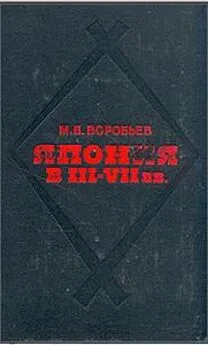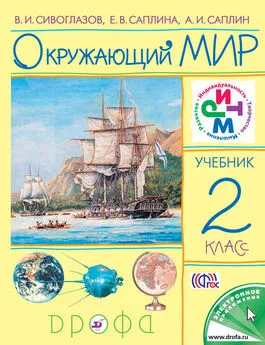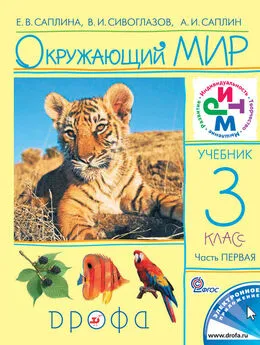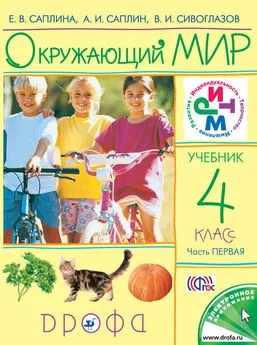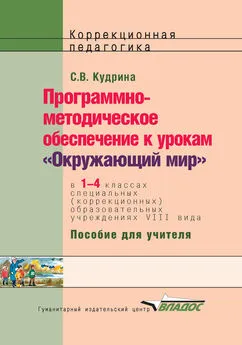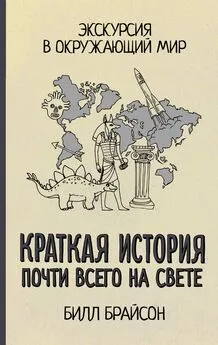Михаил Воробьёв - Япония в III-VII вв. Этнос, общество, культура и окружающий мир
- Название:Япония в III-VII вв. Этнос, общество, культура и окружающий мир
- Автор:
- Жанр:
- Издательство:Наука
- Год:1980
- Город:Москва
- ISBN:нет данных
- Рейтинг:
- Избранное:Добавить в избранное
-
Отзывы:
-
Ваша оценка:
Михаил Воробьёв - Япония в III-VII вв. Этнос, общество, культура и окружающий мир краткое содержание
Книга представляет собой первую в советском японоведении попытку фундаментального, комплексного анализа истории Японии в III–VII вв. В ней рассматриваются основные аспекты этнической, социально-экономической и культурной — истории населения Японских островов того периода. Автор подробно исследует сложный процесс возникновения феодальной государственности и классической культуры Японии.
Япония в III-VII вв. Этнос, общество, культура и окружающий мир - читать онлайн бесплатно полную версию (весь текст целиком)
Интервал:
Закладка:
Kikuchi, 1967.—Kikuchi Y. Class and Status Kohmin — «Rekishigaku kenkyu».Tokyo, 1967, № 9.
Kikuchi 1965.—Кiкuсhi Y. On Dealing in Land in Ancient Japan. — «Shirin». Kyoto, 1965, vol. 48, № 2.
Kiley, 1977.—Kiley C. J. Uji and Kabane in Ancient Japan. — «Monumenta Nipponica». Tokyo, 1977, vol. 32, № 3.
Kiley, 1976.—Kiley C. J. The Role of the Queen in the Archaic Japanese Dynasty. — Actes du XXIX congres Internationale des orientalistes, 1973, Japan, vol. 1.
Kiley, 1973.— Kiley C. J. State and Dynasty in Archaic Yamato. — «Journal of Asian Studies». Ann Arbor, 1973, vol. 33, № 1.
Kim, 1972.— K im Jae Bung. Dates on Early Japanese History. — «Chosen gakuho». Tenri, 1972, № 63.
Kim, 1970.— Kim Jae Bung. A Study on the Yamatai State. — «The Han». Tokyo, 1970, vol. 4, № 3.
Kinoshita, 1971.— Kinoshita Tadaishi. Overlapping of Two Types of Ethnical Culture: Jomon and Yayoi. — «Minzokugaku kenkyu». Tokyo, 1971, vol.36,№ 1.
Kitamura, 1957.— Kitamura Bunji. An Essay on the Policy of the Government towards Be-no tami in the Period Following the Taika Reform. — «The Annual Reports on Cultural Science». Sapporo, 1957, № 6.
Kitano, 1973.—Kitano Kohei. An Archaeological Study of Kaya and Kaya Culture in Korea. — «Kobe shosen daigaku kiyo, bunka ronshu». Kobe, 1973, № 21.
Kobori, 1957.— Коbоri A. Les etapes historiques des mathematiques au Japon. — Univ. de Paris. Conference faite au Palais de la decouverte le 3 nov. 1956. Hist, des Sciences, ser. D. № 44. p., 1957.
Kohama, 1960.— Коhama M. An Anthropometric Study of the Japanese. On the Local Differences and the Origin of the Japanese. — «The Quarterly Journal of Anthropology». Fukuoka, 1960, vol. 7, № 1–2.
Komai, 1969.— Komai K. Thoughts on the Kumaso and Hayato Stocks. — «Palaeologia». Osaka, 1969, vol. 16, № 2–4.
Komai, 1964.— Komai K. The Ainu in the Age of T'ang Dynasty. — «Acta Asiatica». Tokyo, 1964, № 6.
Komatsu, 1962.— Komatsu Isao. The Japanese People. Origins of the People and the Language. Tokyo, 1962.
Kono, 1972.— Kono Katsuyuki. The View of «Monarch» as an Ideology of the Kojiki and Nihonshoki. — «Rekishigaku kenkyu». Tokyo, 1972, № 389.
Kono, 1969.— Kono K. Formation of the Legend on Yamato-takeru (Mainly on the Eastern Conquest). — «Rekishigaku kenkyu». Tokyo, 1969, № 346.
Kurihara, 1967.— Kurihara Tomonobu. The Diplomatic Phase of Sam-han of the Ancient Korea towards Japan. — «Kodab. Tokyo, 1967, № 49, 50.
Kurihara, 1964. (I). — Kurihara Tomonobu. An Aspect of the International Surroundings of Yamatai koku as Described in San Kuo Chin. — «Shigaku zasshi». Tokyo, 1964, vol. 73, № 12*.
Kurihara, 1964 (II). — Kurihara Tomonobu. On the Ancient States Yamatai and Yamato. — «Shikan». Tokyo, 1964, № 70.
Ledyard, 1975.— Ledyard G. Galloping Along with the Horseriders: Looking for the Founders of Japan. — «Journal of Japanese Studies». Seatle, Wash., 1975, vol. 1, № 2.
Leonard, 1969.—Leоnard J. N. Early Japan. Weert, 1969.
Lewin, 1962.—Lewin B. Aya and Hata. Bevolkerungsgruppen Altjapans kontinentaler Herkunft. Wiesbaden, 1962.
Maekawa, 1965 (I). — Maekawa A. Problems of Status and Class System of Shisei and Bemin in 5th and 6th Centuries. «Rekishigaku kenkyu». Tokyo, 1965, № 304.
Maekawa, 1965 (II). — Maekawa A. Formation Process of Uji-Kabane-sei in Ancient Japan. — «Rekishigaku kenkyu». Tokyo, 1965, № 298.
Maki, 1970.—Maki Kenji. Conditions for the Correct Interpretation of Weich'ih. — wejen — ch'iuan — «Shirin». Kyoto, 1970, vol. 53, № 5.
Maki, 1962.—Maki K. The Society of Weijen in the Second and Third Centuries. — «Shirin». Kyoto, 1962, vol. 45, № 2.
Marugame, 1972.— Marugame K. Problems Concerning the Era of Ancient Times in Japan, — «Chosen Gakuho». Tenri, 1972, № 63.
Masumura, 1968.— Masumura H. Emperors of the Place of the Rising Sun and of the Place the Setting Sun — on the Credentials of the Japanese King. — «Shirin». Kyoto, 1968, vol. 51, № 3.
Miller, 1967.—Miller R. A. Old Japanese Phonology and the Korean-Japanese Relationship. — «Language». Baltimore, 1967, vol. 43, № 1.
Miller, 1974.— Miller R. J. Ancient Japanese Nobility. The Kabane Ranking System. Berkeley — Los Angeles — London, 1974.
Minami, 1963.— Minami H. Cultural Theories on Japan by the Japanese Scholars. A Geneological Review. — «Shiso». Tokyo, 1963, № 463.
Mitsuhashi, 1966.—Mitsuhashi T. Japanese Farming Prior to the Taika Reform. — «Keizai ronshu». Tokyo, 1966, v. 16, № 45.
Miyahara, 1966.— Miyahara T. The Structure of the Nu-hi in Ancient Japan. — «Rekishigaku kenkyu». Tokyo, 1966, № 312.
Mizuno, 1968.—Mizuno Yu. Origins of the Japanese People. — «Understanding Japan». Tokyo, 1968, № 22.
Mizuno, 1967,— Mizuno Yu. A Study of Zingu kogo. — «Shikan». Tokyo 1967, № 76.
Morris, 1971,—Morris I. Yamato Takeru. The Brave of Japan. — «History Today». L., 1971, vol. 21, № 9.
Mun Sa Wi, 1971.—Mun Sa W i. On Reclamation of Kinai Region by Immigrants from the Three Dynasties in Ancient Korea. — «Rekishigaku kenkyu». Tokyo, 1971, № 374.
Mflnsterberg, 1904, 1905, 1907.—Munsterberg O. Japanese Kunstgeschichte. T. 1–3. Braunschweig, t. 1 — 1904, t. 2 — 1905, t. 3— 1907.
Murdoch, 1910.—Murdoch J. A History of Japan. Kobe, 1910, vol. 1. From the Origins to the Arrival of the Portuguese in 1542 A.D.
Nachod, 1906, 1929.—Nachod O. Geschichte von Japon. Gotha, 1906 Bd 1 L
1929, Bd 2, H. 1.
Nakamura, 1969.—Nakamura H. A History of Development of Japanese Thought A.D. 592—1868, vol. 1. Tokyo, 1969.
Nakamura, 1961.—Nakamura H. Japan and Indian Asia. Their Cultural Relations in the Past and Present. Calcutta, 1961.
Nakamura, 1967.— Nakamua К. On the Land-ownership in Ancient Japan. — «Keizaigaku». Sendai, 1967, vol. 28, № 3–4.
Naoki, 1968.— Naoki K. Tax System and «Miyake» in Ancient Japan. — «Jimbun kenkyu». Osaka, 1968, vol. 20, № 9.
Naoki, 1962.— Naoki K. On the Private Military Force of Tenno in the Ancient Japan. — «Shirin». Kyoto, 1962, vol. 45, № 3.
Nash, Schaw, 1965.— Nash D., Schaw L. C. Achievement and Acculturation: A Japanese Example. — Context and Meaning in Cultural Anthropology. N. Y., 1965.
Naumann, 1967.— Naumann W. Die Qoldfunde von 749 und der Einfluss koreanischer Immigranten im Japan. — «Oriens Extremus». Hamburg, 1967, vol. XIV, № 1.
Nguyen, 1973.— Nguyen Khac-Kham. Japanese Culture and The Earliest Chinese Model. — «Studies on Japanese Culture». Tokyo, 1973, vol. 2.
Nishio, 1913.— Nishio K. The Mining Industry of Japan. — «Transactions of the American Institute of the Mining Engeneers». N. Y., 1913, vol. 43.
Noma, 1954.— Noma Seiroku. The Art of Clay. Primitive Japanese Clay Figurines, Earthenwares and the Haniwa. Tokyo, 1954.
Obayasbi, 1965.— Obayashi T. Some Theoretical Problems in Historical Ethnology. — «Minzokugaku kenkyu». Tokyo, 1965, vol. 30, № 2.
Oka, 1964.— Oka M. Ethno-Historical Formation of the Japanese People. — Japan, its Land, People and Culture. Tokyo, 1964.
Okubo, 1894.— Okubo T. Die Entwickelungsgeschichte der Territorialverfassung und Selbstverwaltung Japans in politischer und insbesonderen wirthschaftlicher Beziehung. Halle, 1894.
Рак Siln, 1972.—Paк Si1n, A Study of Earliest History of Japan. — «Chosen Gakuho». Tenri, 1972, № 65.
Pippon, 1935.— Pippon T. Shotoku Taishi Jfl Shichi Jo Kempo. Die 17 Verfassungsartikel
Shotoku Taishi's und eine japanische Interpretation. — Studien zur Geschichte und Kultur des Nahen und Fernen Ostens Paul Kahle zum 60 Geburtstag. Leiden, 1935. Podpalova, 1970.—Podpalova G. I. Soviet Historiography of Japan in 1960–1970. Moscow, 1970.
Podpalova, 1968.— Podpalova G. Fifty Years of Soviet Historiography of Japan (1917–1966). M., 1968. -
Ponsonby-Fane, 1959.—Ponsonby — Fane R. A. B. The Imperial House of Japan. Kyoto, 1959*.
Readings in Japanese History: Vol. 1: Early Japan — Heian. Tokyo, 1976.
Rih Jin Hi, 1974.— Rih Jin Hi. Some Problems of the Tombstone of King Kwang Kae-to. — «Shigaku zasshi». Tokyo, 1974, vol. 83, № 7.
Robinson, 1961.— Robinson G. W. Early Japanese Chronicles: The Six National Histories. — Historians of China and Japan. L., 1961.
Rumpf, 193… — Rumpf Fr. Die Historische Auswertung der altesten chinesischen Berichte uber Japan. В., 193…
Saeki, 1977.— Saeki A. Studies on Ancient Japanese History. Past and Present. — «Acta Asiatica». Tokyo, 1977, № 31.
Saito, 1969.— Saito T. Vestiges of the Culture of Naturalized Japanese from Korean and Chinese Birth in Our Country. — «Ninon rekishb. Tokyo, 1969, № 251–252.
Sakamoto, 1971.— Sакamоtо Y. Japan and Korea in the 3d Century. — «Rekishigaku kenkyu». Tokyo, 1971, № 369.
Sakamoto, 1969.— Sakamoto Y. Korea and Japan in the 5th Century. — «Shirin». Kyoto, 1969, vol. 52, № 5.
Sakazume, 1963.— Sakazume N. The Boot, the Emperor, the Rice and the Metal — «Kokogaku zasshi». Tokyo, 1963, vol. 49, № 1.
Sansom, 1962.— Sansоm G. B. Japan, A Short Cultural History. N. Y., 1962.
Sansom, 1958.— Sansom G. B. A History of Japan to 1334. Stanford Univ. Press. 1958.
Seki, 1962.— Seкi A. Concerning the Governors of Togoku During the Taika Era. — «Bunka». Sendai, 1962, vol. 21, № 2.
Seki, 1959.— Seкi A. The Taika Reform and the Authority of Tenno. — «Rekishigaku kenkyu». Tokyo, 1959, № 228.
Seki, 1973.—Seki K. The Eastern Expedition of Emperor Jimmu: True or Not? — «Rekishigaku kenkyu». Tokyo, 1973, № 394.
Seth, 1969.— Seth R. Milestones in Japanese History. Phil — N.Y., 1969.
Shiio, 1933.—Shiio B. The Relation between Japanese National Traits and Buddhism. Tokyo, 1933.
Shiozawa, 1965.— Shiozawa K. Les historiens japonais et le mode de production asiatique. — «La pensee». P., 1965, № 122.
Shirai, 1926.— Shirai M. A Brief History of Botany in Old Japan. — Scientific Japan. Past and Present. Tokyo, 1926.
Slawik, 1955.— Slawik A. Austronesische Elemente in den japanischen Reichgrunderungssagen
und das Hayato-Problem. — Congres International des Sciences Anthropologiques et Ethnologiques, 1952. Wien, 1955.
Smith, Mikami. — Smith D. E., Mi к ami Y. A History of Japanese Mathematics. Chicago, 1914.
Soon Yueh-lun, 1971.— Soon g Yueh-lun. A Study of Naturalized Japanese. From Chinese Birth in Ancient Times. — Proceedings of the Twenty-Seventh International Congress of Orientalists. 1967. Wiesbaden, 1971.
Suematsu, 1958.— Suematsu Y. Japan's Relations with the Asian Continent and the Korean Peninsula (Before 950 A.D.). — «Cahiers d'histoire mondiale». P., 1958, t. 4, № 3.
Sugiyama, 1971.—Sugiyama J. Some Problems of Deer Hunting. — «Chosengakuho». Tenri, 1971, № 60.
Suzuki, 1968.— Suzuki O. Historical Background of the Art of Asuka Period. — «Chosen gakuho». Tenri, 1968, № 49.
Suzuki, 1948.— Suzuki S. Study of Wej-jen-chuan from the Historical Data. — «To a Ronso». Tokyo, 1948, vol. 6.
Takahashi, 1956.— Takahashi H. K. Etat actuel et tendences generates des etudes historiques au Japon depuis la guerre. — «Revue historique». P., 1956, an. 80, t. 216, fasc. 1.
Takahashi, I960.—Tакahashi T. A Point of View of the Kokuzo System. — «Rekishigaku kenkyu». Tokyo, 1960, № 244.
Takakura, 1960.— Takakura Sh. The Ainu of Northern Japan. A Study in Conquest and Acculturation. Philadelphia, 1960.
Читать дальшеИнтервал:
Закладка:
